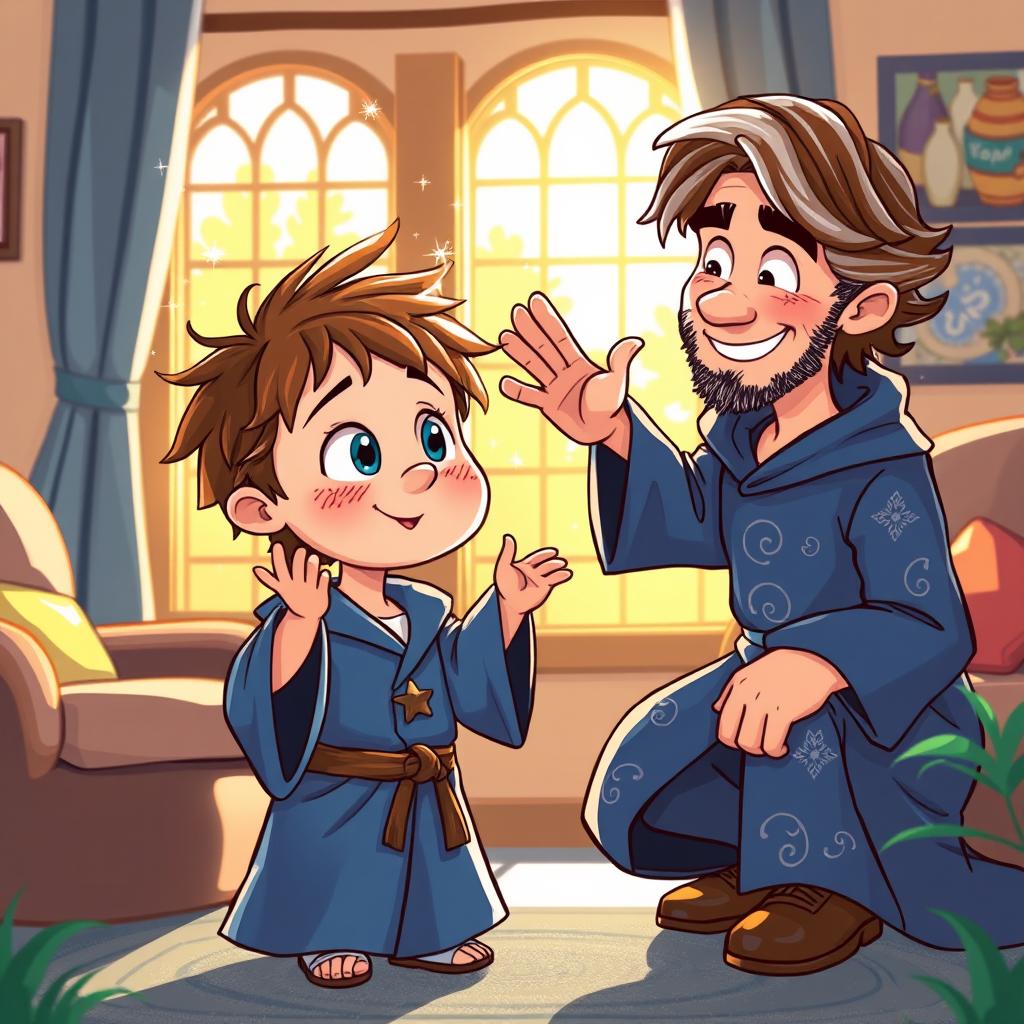How to Generate Consistent Characters for Your Story with StoryArtAI
Creating consistent characters for your story can be challenging, but with StoryArtAI, you can streamline the process.
In this article, we'll walk you through the steps to structure your prompts effectively to ensure your characters are depicted consistently throughout your narrative. By focusing on key details and using structured prompts, you’ll be able to generate illustrations that align perfectly with your vision.
Step-by-Step Guide to Structuring Your Prompt
1. Define Key Character Attributes
Start by detailing the core attributes of your character. This includes physical features, clothing, and any unique characteristics that make them stand out. Consistency is key, so be as specific as possible.
Example Prompt Structure:
- Hair: Color, Style, Any Special Features
- Eyes: Color, Shape, Expression
- Face: Shape, Notable Features, Any Special Marks
- Clothing: Type, Color, Any Unique Elements
Example 1:
A five-year-old wizard with an innocent and curious expression. His features are distinct yet soft, fitting for a young child.
Hair: Messy brown hair with a touch of silver sheen, adding a hint of magical charm.
Eyes: Large, round, and ice-blue, mirroring his father's gaze but with a more playful glint.
Face: Round and youthful with a sprinkle of adorable freckles across his cheeks.
Clothing: Miniature wizard’s robe, a shade darker blue than his father's, accentuating his youthful size and enchantment.
2. Include the Character’s Pose and Expression
Specify what the character is doing and their facial expression. This helps the AI understand the context and emotion you want to convey.
Example Prompt Structure:
- Pose: Action or Activity
- Expression: Emotion or Mood
Example 2:
Mark (5-year-old):
Hair: Messy brown hair with a touch of silver sheen, adding a hint of magical charm. The unruly locks are tousled and playfully disheveled, as if he had just run through a gentle breeze.
Eyes: Large, round, and ice-blue, mirroring his father's gaze but with a more curious, wonder-filled glint. His eyes are wide open, gazing up in awe at something unseen.
Face: Round and youthful, his cheeks adorned with a sprinkle of adorable freckles that dance across his features. His expression is one of innocent fascination, lips parted slightly in a look of enchantment.
Clothing: Miniature wizard's robe, a shade darker blue than his father's, accentuating his youthful size and enchantment. The robe cascades around him in soft folds, the sleeves slightly too long for his small frame, giving him an endearing, whimsical appearance.
Posture: The young wizard stands with his weight shifted slightly to one side, head tilted back as if observing something wondrous above. One small hand is outstretched, fingers spread, as if trying to grasp at the magic in the air around him.
Result

3. Set the Scene
Describe the environment where the character is situated. This helps in placing the character in a consistent context across different illustrations.
Example Prompt Structure:
- Background: Setting, Key Features
- Additional Elements: Magical effects, Lighting
Example 3:
- Background: Cozy, magical library with floating candles
- Additional Elements: Glowing spellbook, magical sparkles
3.1 Combine All Elements into a Comprehensive Prompt
Now that you have all the individual components, combine them into a single prompt. This should cover the character's appearance, pose, expression, and the scene.
Example 4:
The late afternoon sun filters through the tall windows of the cozy cottage, casting a warm glow over the familiar interior. In the center of the living room, young Mark stands transfixed, his ice-blue eyes wide with wonder as he gazes up at the shimmering motes of light dancing in the air around him.
His messy, chestnut-brown hair, tinged with silvery strands, frames his round, freckled face, which bears an expression of pure enchantment. The miniature wizard's robe, in a deep shade of blue, swirls softly around his small frame as he slowly raises one hand, fingers outstretched, trying to grasp at the sparkling flecks of magic.
Nearby, Mark's father, Mark, observes his son with a fond, amused smile. The elder wizard's own wavy hair, in a similar chestnut hue streaked with silver, falls across his face in an artfully disheveled style. His ice-blue eyes, mirrored in his son's gaze, hold a playful glint as he watches the child's innocent curiosity unfold.
The father's deeper blue wizard's robe, embroidered with intricate, swirling patterns in shimmering silver thread, rustles softly as he takes a step forward, kneeling down beside his son. Placing a gentle hand on the boy's shoulder, he murmurs something in a low, soothing tone, guiding Mark's attention to the subtle movements of the magical motes.
A look of pure delight spreads across the child's face as he becomes attuned to the rhythmic dance of the lights, his small fingers clutching at the air with renewed wonder. The father's fond expression deepens, and for a moment, the two wizards are lost in a shared appreciation of the simple, yet profound, magic that fills their home.
Result

Tips for Generating Consistent Characters
- Be Specific: Detailed descriptions help the AI understand your vision. Avoid vague terms and provide as much detail as possible.
- Use Consistent Language: Keep the language consistent across prompts. This ensures that the AI generates illustrations that align with each other.
- Reference Previous Illustrations: If possible, refer back to previous illustrations of the character to maintain visual continuity.
- Experiment and Refine: Don’t be afraid to tweak your prompts based on the results. Adjust details as needed to perfect the consistency.
Happy illustrating! 🎨